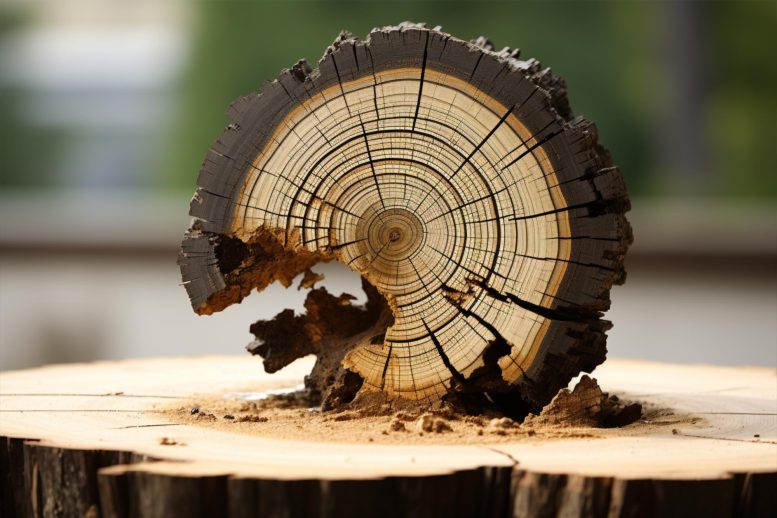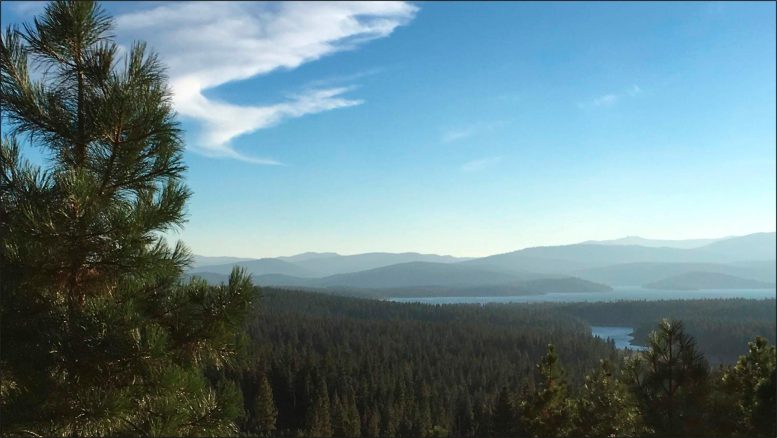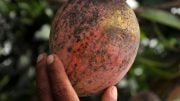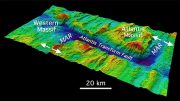
New research reveals that the space-for-time substitution method, used to predict species responses to climate change, inaccurately forecasts the impact of warming on the ponderosa pine. This finding suggests that the method may not be reliable in predicting the future responses of species to changing climates. Credit: SciTechDaily.com
A new study involving University of Arizona researchers suggests change is happening faster than trees can adapt. The finding offers “a word of caution for ecologists” studying climate change.
As the world heats up and the climate shifts, life will migrate, adapt, or go extinct. For decades, scientists have deployed a specific method to predict how a species will fare during this time of great change. However, according to new research, that method might be producing results that are misleading or wrong.
Flaws in Predictive Methods Revealed
University of Arizona researchers and their team members at the U.S. Forest Service and Brown University found that the method – commonly referred to as space-for-time substitution – failed to accurately predict how a widespread tree of the Western U.S., called the ponderosa pine, has actually responded to the last several decades of warming. This also implies that other research relying on space-for-time substitution may not accurately reflect how species will respond to climate change over the next several decades.
The team collected and measured ponderosa pine tree rings from across the Western U.S. going as far back as 1900 and compared the trees’ actual growth to how the model predicted the trees should respond to warming.

A view overlooking a forest of ponderosa pine and Jeffrey pine from Verdi Mountain near Truckee in California. Credit: Daniel Perret
“We found that space-for-time substitution generates predictions that are wrong in terms of whether the response to warming is a positive or negative one,” said Margaret Evans, a coauthor on the paper and an associate professor in the UArizona Laboratory of Tree-Ring Research. “This method says that ponderosa pines should benefit from warming, but they actually suffer with warming. This is dangerously misleading.”
Their findings were published on December 18 in the Proceedings of the National Academy of Sciences. U.S. Forest Service ORISE Fellow Daniel Perret is first author and received his tree ring analysis training at the UArizona laboratory through the university’s summer field methods course. This research was part of his doctoral dissertation at Brown University with Dov Sax, a professor of biogeography and biodiversity and coauthor on the paper.
Inaccuracies in Space-for-Time Substitution
This is how space-for-time substitution works: Every species occupies its preferred range of climate conditions. Scientists have assumed that the individuals growing at the hotter end of that range can serve as an example of what might happen to populations at cooler locations in a warmer future.
The team found that ponderosa pine trees grow at a faster rate at warmer locations. Under the space-for-time substitution paradigm, then, this suggests that as the climate warms at the cool edge of distribution, things should be getting better.
“But in the tree ring data, that’s not what it looks like,” Evans said.
However, when the team used tree rings to assess how individual trees responded to changes in temperature, they found that the ponderosas were consistently negatively impacted by temperature variability.
“If it’s a warmer-than-average year, they put on a smaller-than-average ring, so warming is actually bad for them, and that’s true everywhere,” she said.
The team suspects that this is happening because the trees can’t adapt fast enough to keep up with the quickly changing climate.
An individual tree and all its rings are a record of the genetics of that specific tree being exposed to different climatic conditions in one year compared to the next, Evans said. But how a species responds as a whole is the result of the slow pace of evolutionary adaptation to the average conditions at a specific location, which are different from another location. Like evolution, migration of better-adapted trees with the changing temperatures could potentially rescue species, but climate change is happening too fast, Evans said.
Impact of Rainfall and Final Thoughts
Beyond temperature, the team also investigated how trees respond to rainfall. They confirmed that more water is always better, whether you look across time or space.
“These spatially based predictions are really dangerous, because the spatial patterns reflect an end point after a long period of time when species have had a chance to evolve and disperse and, ultimately, sort themselves out on the landscape,” Evans said. “But that’s just not how climate change works. Unfortunately, the trees find themselves in a situation where change is happening faster than the trees can adapt, which is really putting them at risk of going extinct. It’s a word of caution for ecologists.”
Reference: “A species’ response to spatial climatic variation does not predict its response to climate change” by Daniel L. Perret, Margaret E. K. Evans and Dov F. Sax, 18 December 2023, Proceedings of the National Academy of Sciences.
DOI: 10.1073/pnas.2304404120
Funding: Brown University Department of Ecology, Evolution, and Organismal Biology, Institute at Brown for Environment and Society, American Philosophical Society Lewis & Clark Fund for Exploration and Field Research, USDA Forest Service Pacific Northwest Research Station, DOE Oak Ridge Institute for Science and Education, NSF Macrosystems Biology









So the climate scientists were wrong about a prediction, confirming how urgently correct they are. Sure.
““If it’s a warmer-than-average year, they put on a smaller-than-average ring, so warming is actually bad for them, and that’s true everywhere,” she (Margaret Evans, coauthor) said.”, so that’s what this is about. It is well understood that a larger ring size means more growth, and a small ring generally indicates drought. Where they say warmer, they mean dryer. You can look at the rings of trees, and see the history of droughts going back centuries.
“Beyond temperature, the team also investigated how trees respond to rainfall. They confirmed that more water is always better, whether you look across time or space.”, this team is really failing basic biology. Is this their first encounter with trees? More water is not always better for a tree. Too much water can cause similar symptoms to drought, or kill the trees outright from rotting.
I looked at the abstract, and its no better. So they’re chopping down pine trees without a clue of what they’re looking at. Brown University, keep your climate scientists away from trees.
Essentially what I was going to say. The reduced ring-thickness is probably water stress, not temperature. This is one of the problems with trying to use trees as a proxy for temperature. Also, the choice of tree species can be important in conclusions because Ponderosa Pine typically live in the mountains where the soils are thin and don’t have good water retention. Trees growing in thicker soil may act very differently.
“…, but climate change is happening too fast, Evans said.”
That is an opinion without supporting facts. The validity of the opinion can only be established after the fact. It is a possibility; however, that isn’t what she said.
If we’re thinking alike, that’s awesome. I wondered about the variation in tree species, but I haven’t studied it. Mountain soils are rocky and do drain fast. Their location of study seems to be the American Pacific, Seattle WA to Colorado all through California; there’s been a major drought, which seems to be ending, but could explain a change in Ponderosa Pine growth.
Dendrochronology is imperfect, but I enjoy it. It’s exciting to see the tree’s life history written in its rings, confirming how things were by correlating the rings in different locations. I love it in archaeology, where they can tell with reasonable accuracy what year an ancient ship was built, based on the rings in surviving timbers of a shipwreck, and know it was cut say, after the rainy season, that it was particularly rainy that spring, and the mast was from a tree cut in around August. It’s more statistical correlation than harder science, but it’s still great, and it’s a real tool the authors misused.
There’s a pattern with these studies. They start with a climate change opinion, and the goal of promoting it. So they collect some awkward indirect evidence. They then misinterpret the evidence to confirm the opinion and further their urgent goal. The article then encourages panic. They think tree rings directly indicate temperature, and that climate change always means warmer, meanwhile climate change could likely mean warmer weather with more precipitation, or even cooler. If the rings had been larger instead, I believe it would have confirmed their “climate change is happening” premise again too, a climate change. They’re growing better because of climate change. They’re growing worse because of climate change. Even if the rings became completely uniform, that would be a climate change. Whatever happens, it confirms their unfalsifiable premise, in chaotic everchanging nature. Without falsifiability, this isn’t science.
“If we’re thinking alike, that’s awesome.”
Your use of the word “awesome” suggests that you are much younger than me. So, it is doubly awesome that we think alike. 🙂
Hah! I’m using the old definition of awesome. It’s an honor that surprises me. I don’t have the geophysics experience and credentials you do. My old physics teacher would be just as awestruck.
> So the climate scientists were wrong about a prediction,
No climate scientists were involved in any of this research, hmm?
> this team is really failing basic biology.
Can we see your credential, please? My theory – you have none.
Did you miss the headline? Did you not read the title of the study itself, “spacial climactic variation…response to climate change”? If you claim non-climate scientists are publishing a study on climactic variation from climate change, why aren’t you attacking their lack of credentials?
Anyway, an appeal to authority fallacy? You seriously require my biology credential for criticizing their “more water is always better” claim? Put a pinetree in a lake, and see if more water is always better for it. Or find one growing better at the bottom of a lake. I see your claim to be Human, but can we see those credentials first, as you seem unfamiliar with the lifeforms of Earth. It might help explain these studies, as these authors are similarly unfamiliar with trees.
Are you aware that one of the better known ‘climatologists,’ Michael Mann, does not have a degree in “climatology” That is not unusual. His degrees are similar to mine. You have just demonstrated that you are poor at inductive reasoning. Perhaps it is because you didn’t bother to learn anything about the people you were formulating a ‘theory’ about. Also, initial proposals should more properly be called hypotheses, not theories.